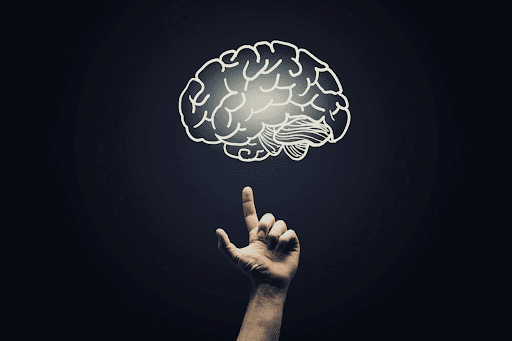Our brains can be real jerks sometimes when it comes to making decisions. For organs that carry an air of calculation and cognition, the choices our gray matter makes don’t always seem strictly…well, cerebral. We all have stories of faulty judgment or irrational moves that go against common sense.
What made my brain tell me I “deserved” that sports car or donut? It seems our brains act like an unpredictable coin flipper, landing on either side of a choice depending on unseen forces. So, what exactly is happening up there when we deliberate and decide?
Table of Contents
The Brain’s Decision-Making Power Players
When confronted with a decision, our brains draw on different structures and functions behind the scenes:
- The prefrontal cortex – The rational actor weighing options and forecasts.
- The amygdala – The emotional reactor judging risk versus reward.
- Memory centers – Providing relevant past data to analyze.
- Reward circuits – Offering hints of potential pleasure or pain from choosing.
It’s a rowdy committee meeting inside our heads with different parties lobbying hard for their preferred outcomes.
The Steps Our Brains Take When Deciding
While it may feel like our important decisions emerge from a black box, neuroscientists have identified four distinct phases our brains march through:
1.Taking It All In
First, the brain collects and absorbs information coming at it from all directions using our senses, memories, and emotions.
Ever walk into a restaurant and immediately smell something irresistible that you end up ordering without even opening the menu? That’s the brain gathering key inputs right from the start to begin shaping its choice.
2. Conferring With Itself
The brain takes all that intel streaming in and starts making connections, comparing it against past experiences. If what it hears reminds it of something positive, old pleasure memory centers will start firing to steer it that way again.
Hearing a song at the club that reminds you of an ex can trigger all sorts of conference calls between regions.
3. Calculating and Judging
Here’s where the prefrontal cortex steps up, offering its estimations, predictions, warnings, and inferences about each option to identify the optimal choice aligned with our goals.
But don’t forget – that rowdy committee of emotions, cravings, memories, and knee-jerk reactions are all still clamoring to influence the decision based on primal urges.
4. Deciding
Finally, somewhere amidst the cacophony, when a consensus has formed around one option that satisfies enough urgent priorities, our basal ganglia gives the green light to act.
Like a judge banging his gavel, this tiny brain structure sounds out the command that moves us to action towards reward.
“Good decisions come from experience. Experience comes from making bad decisions.” – Mark Twain.
Key Brain Chemicals That Sway Our Decisions
Beneath it all, driving much of this decision-making process, are key neurotransmitters carrying signals between neurons to activate certain responses. The big four influencers are:
Dopamine
- Gives us motivation and pleasure from picking options with bigger perceived payoffs
- Provides the satisfying “Yeah!” feeling when taking risks
- Addictive rewards can lead to poor judgment
Serotonin
- Regulates moods, impulses, and patience for evaluating options thoroughly
- Low serotonin linked to choices we later come to regret
- Calms irrational urges, curbs compulsive decisions
Oxytocin
- Activates in social situations impacting trust, empathy, and generosity
- Makes people more receptive to suggestions
- Influences relationship choices and selfless decisions
Cortisol
- Key stress hormone, clouds rational calculus regions
- High cortisol = hurried, emotionally-charged decisions
- Can drive hurried fight-or-flight-related choices
These four neurotransmitters help reveal why our judgment varies drastically day to day based on mood, stress, cravings, and who we are around.
The Biases That Sabotage Our Decisions
To streamline deciding, our brains rely heavily on shortcuts and biases unconsciously sabotaging logic:
Familiarity Bias
- Preferring past pleasures due to memory associations
Ordering the same entree you always get
Confirmation Bias
- Selectively favoring info that matches beliefs
People sticking to political party platforms
Loss Aversion
- Strong tendency to avoid any perceived losses
Not selling an underperforming stock due to fear
Endowment Effect
- Overvaluing things already owned
Setting a higher sales price for your own car
These natural quirks make objectivity, statistical meaning and logical consistency nearly impossible for our choices. We easily end up with inconvenient cars, unhealthy foods, and toxic relationships against our better judgment.
Improving Our Decisions
While we can never fully escape the landmines wired into our brain circuitry, self-awareness helps us navigate more mindfully by:
- Recognizing our own biases
- Broadening inputs
- Consulting objective data
- Sleeping on big decisions
- Strengthening willpower
The brain has to balance speed, emotions, logic, and social needs when deciding. Training it through self-reflection allows our prefrontal cortex to referee all the forces seeking to sabotage smart choices.
The Takeaway
Rather than perfectly calculated choices made consciously after weighing all alternatives rationally, many judgment calls arise from subconscious forces of emotion, primal urges, recording shortcuts we absorbed growing up, and biological quirks.
So, next time your brain pushes you into another poor choice, have some empathy for its mysterious machinations. There’s a committee meeting of clashing motivations playing out beneath your awareness!

